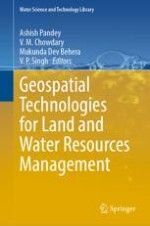2022 | OriginalPaper | Buchkapitel
9. Utility of Satellite-Based Open Access Data in Estimating Land and Water Productivity for a Canal Command
verfasst von : P. K. Mishra, Subhrasita Behera, P. K. Singh, Rohit Sambare
Erschienen in: Geospatial Technologies for Land and Water Resources Management
Aktivieren Sie unsere intelligente Suche, um passende Fachinhalte oder Patente zu finden.
Wählen Sie Textabschnitte aus um mit Künstlicher Intelligenz passenden Patente zu finden. powered by
Markieren Sie Textabschnitte, um KI-gestützt weitere passende Inhalte zu finden. powered by
